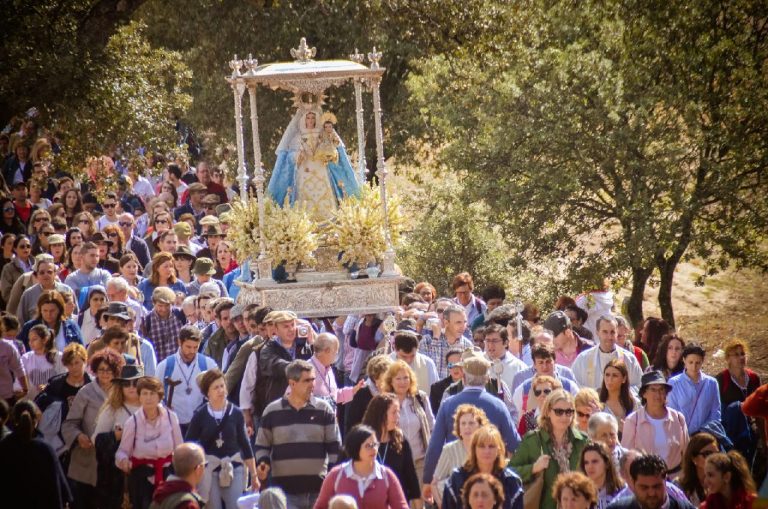Can Protection Charms and Mythology Inspire Modern Rewards?
Throughout human history, protection charms and mythological symbols have played a vital role in shaping our understanding of safety, luck, and success. These symbols—ranging from ancient amulets to divine stories—have not only provided comfort and hope but also laid the groundwork for modern concepts of achievement and reward. Recognizing the deep roots of these symbols reveals how ancient beliefs continue to influence contemporary design of incentives, particularly in areas like gaming, education, and digital culture.
- Introduction: The Power of Protection Charms and Mythology in Human Culture
- The Educational Concept: Connecting Mythology and Modern Rewards
- Symbols of Divine Power and Their Modern Interpretations
- Mythological Inspiration in Modern Gaming and Rewards
- Non-Obvious Connections: Deep Cultural and Psychological Layers
- Designing Modern Rewards Inspired by Mythology and Protection Charms
- Ethical and Cultural Considerations in Using Mythology for Modern Incentives
- Future Perspectives: The Evolution of Myth-Inspired Rewards and Symbols
- Conclusion: Harnessing Mythology and Protection Charms to Inspire Meaningful Rewards
1. Introduction: The Power of Protection Charms and Mythology in Human Culture
a. Defining protection charms and their historical significance
Protection charms are objects or symbols believed to ward off evil, danger, or misfortune. From ancient Egyptian amulets inscribed with hieroglyphs to medieval talismans, these artifacts served as tangible representations of hope and divine intervention. Historically, they provided psychological comfort and fostered social cohesion, especially in uncertain times. For example, the «Eye of Horus» in Egyptian culture symbolized protection and health, reinforcing collective belief in divine safeguard.
b. The role of mythology in shaping human beliefs about safety and luck
Mythology offers narratives that explain natural phenomena, human experiences, and societal values. These stories often feature gods, heroes, and divine symbols associated with protection, prosperity, and luck. For instance, Greek mythology’s Athena was revered as a goddess of wisdom and protective strategy, embodying the human desire for safety through intelligence. Such stories reinforced cultural norms and provided moral guidance, shaping collective perceptions of security and success.
c. Overview of how ancient symbols influence modern rewards and incentives
Ancient symbols—like the laurel wreath signifying victory or the ouroboros representing eternity—continue to inspire modern reward systems. In contemporary settings, these symbols are embedded in branding, awards, and gamification strategies to evoke feelings of achievement, security, and aspiration. As we explore later, understanding this historical context helps in designing meaningful, culturally resonant incentives today.
a. How myths serve as allegories for values and societal goals
Myths often encode societal ideals—courage, wisdom, resilience—that serve as moral benchmarks. For example, the myth of Hercules embodies strength and perseverance, inspiring individuals to achieve greatness. These allegories underpin modern reward systems by associating success with virtues that societies cherish, thereby motivating behaviors aligned with collective goals.
b. The transformation of mythological symbols into contemporary symbols of success
Symbols like the phoenix, representing rebirth, have transitioned into logos and motifs in branding and gaming, symbolizing renewal and achievement. Similarly, divine metals such as gold have evolved from sacred offerings to standard measures of value and accomplishment, seen in awards like gold medals or cryptocurrency tokens. Recognizing this transformation allows creators to craft rewards that resonate deeply across cultures and eras.
c. The importance of understanding cultural roots to design effective modern rewards
Cultural sensitivity ensures that symbols of protection and success are used authentically, avoiding misappropriation. For instance, incorporating a symbol like the lotus, sacred in many Asian cultures, into a reward system can foster genuine connection when used respectfully. An awareness of these roots enhances the relevance and acceptance of modern incentives.
a. Ambrosia as a symbol of immortality and its influence on reward systems
In Greek mythology, ambrosia was the food of the gods, conferring immortality. Today, this concept inspires rewards that symbolize ultimate achievement or eternal recognition. For example, lifetime achievement awards or digital badges of «immortality» in leaderboards evoke this mythological idea, motivating individuals to pursue enduring success.
b. The significance of divine metals like gold in representing value and achievement
Gold has long been associated with divinity, power, and achievement. Modern reward structures—such as gold medals, digital currencies, or premium memberships—capitalize on this symbolism. The allure of gold taps into subconscious desires for recognition and security, reinforcing its role as a universal symbol of success.
c. Structural symbols like temple columns as metaphors for connection and stability
Architectural elements like columns or arches symbolize strength and support, reflecting societal stability. In branding and gamification, these symbols suggest a solid foundation for achievement. For instance, the image of a temple with sturdy columns can evoke trustworthiness and enduring value, aligning with modern reward systems that aim for long-term engagement.
a. Case study: Gates of Olympus 1000 – a modern game inspired by Greek mythology
The game scatter pays exemplifies how ancient mythological themes are woven into digital entertainment. It employs symbols like gods, divine weapons, and mythic architecture to create an immersive experience. Such themes not only enhance engagement but also tap into archetypal narratives of heroism and reward, aligning with age-old human desires for recognition and safety.
b. How mythological themes enhance engagement and perceived value in rewards
Incorporating mythological motifs creates a sense of grandeur and timelessness that elevates perceived reward value. Gamers and users often associate these symbols with divine favor or eternal reward, boosting motivation. The thematic depth fosters emotional connection, making achievements feel meaningful beyond mere points or prizes.
c. The role of visual and thematic elements in reinforcing the myth-inspired experience
Visual cues such as golden temples, divine figures, or celestial backgrounds reinforce the mythic narrative. These elements evoke subconscious associations with protection and divine favor, which can psychologically motivate players to pursue rewards with greater fervor. Integrating these themes thoughtfully enhances both aesthetic appeal and motivational impact.
a. Exploring the subconscious appeal of divine protection and eternal rewards
Ancient symbols of divine protection tap into universal human fears and hopes—security, immortality, and belonging. Psychologically, these symbols trigger a sense of safety and aspiration, making rewards associated with them deeply compelling. For example, the idea of eternal life, rooted in myth, continues to motivate individuals in modern contexts such as loyalty programs or digital achievements.
b. How ancient symbols tap into universal human desires for safety and success
Symbols like shields, crowns, or divine blessings serve as archetypes representing protection and triumph. Their recurring presence across cultures demonstrates their effectiveness in fulfilling core human needs. Recognizing these archetypes helps designers craft rewards that resonate across diverse audiences.
c. The psychological impact of mythological narratives on motivation and reward perception
Mythological stories foster emotional engagement, creating a narrative context that amplifies the significance of rewards. When users see their achievements as part of a divine or heroic journey, their motivation increases. This storytelling approach aligns with research indicating that narrative-driven incentives enhance retention and satisfaction.
a. Strategies for incorporating mythological themes into reward structures
Effective strategies include using symbolic imagery, myth-inspired language, and storylines that evoke divine or heroic qualities. For example, tiered rewards named after mythic figures or celestial events can foster a sense of progression aligned with ancient narratives.
b. Balancing authenticity with innovation to resonate across cultures
While it’s important to respect cultural origins, integrating universally recognizable symbols—like the sun or mountain—can bridge diverse audiences. Combining authentic mythological elements with modern design and technology creates compelling, meaningful rewards that feel both genuine and innovative.
c. Examples of successful integrations, including digital and gaming contexts
Games like scatter pays incorporate divine themes, while educational platforms utilize mythic stories to motivate learning. Digital badges, avatar customization, and narrative quests are modern tools that embed myth-inspired symbols, increasing engagement and perceived value.
a. Respecting cultural origins and avoiding appropriation
Using sacred symbols without understanding their cultural significance can lead to misappropriation. Engaging with cultural experts and ensuring respectful representation fosters authenticity and avoids offense.
b. Ensuring that symbols of protection and divinity are used thoughtfully
Symbols should be deployed with understanding of their meaning and context. For example, sacred motifs should not be trivialized or used solely for commercial purposes, but rather as part of a meaningful narrative that honors their origins.
c. Navigating potential misinterpretations or trivializations of sacred symbols
Careful curation and cultural consultation help prevent trivializing symbols that hold deep spiritual significance. This respectful approach enhances credibility and fosters trust among diverse audiences.
a. Emerging trends in gamification and cultural storytelling
Innovations in virtual reality and augmented reality allow immersive mythological experiences, deepening engagement. Interactive storytelling that adapts to user choices can embed ancient symbols into personalized journeys.
b. Potential for new symbols of protection and reward in digital spaces
Digital tokens, NFTs, and virtual relics inspired by mythic artifacts could serve as modern talismans, blending tradition with technology. These symbols can carry personal or collective significance, motivating continued participation.
c. The ongoing relevance of ancient myths in shaping modern notions of success and security
Ancient stories and symbols remain powerful because they address universal human needs. As digital culture evolves, these motifs adapt, ensuring their enduring relevance in inspiring achievement and safeguarding human aspirations.
a. Recap of the interconnectedness between ancient symbols and modern incentives
Ancient protection charms and mythological narratives continue to inform the design of rewards, embedding cultural depth and emotional resonance into modern incentives. Recognizing this connection enriches our approach to motivation and achievement.
b. The enduring power of myth and protection charms in motivating human behavior
These symbols tap into subconscious desires for safety, success, and eternal recognition, making them compelling motivators across generations. Their universal appeal ensures their relevance in diverse contexts, from gaming to education.
c. Final thoughts on integrating educational insights with innovative reward design
By understanding the deep cultural and psychological layers of ancient symbols, creators can craft rewards that are not only motivating but also meaningful and respectful. This approach fosters a more engaged, culturally aware, and inspired audience.



